NTSB Urges USCG to Remove Subchapter K Exemptions for Fire Safety
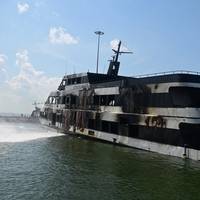
The National Transportation Safety Board (NTSB) recommended Tuesday that engine-room fire detection and fixed fire extinguishing systems be installed in small passenger vessels previously exempted from U.S. Coast Guard regulations in Subchapter K.The NTSB issued the recommendations after investigating an engine room fire aboard the Spirit of Norfolk during a sightseeing cruise near Naval Station Norfolk, Viriginia, on June 7, 2022, with 108 people on board. The fire was too large for the crew to fight, and the passengers and crew were evacuated to other vessels.
Ocean Shippers Playing Catch Up to Electric Vehicle Fire Risk
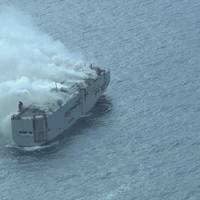
Electric vehicles are crisscrossing the globe to reach their eager buyers, but the battery technology involved in the zero- emission automobiles is exposing under-prepared maritime shippers to the risk of hard-to-control fires, industry, insurance, and emergency response officials said.That risk has been put under the spotlight by the burning car carrier [Freemantle Highway] drifting off the Dutch coast. The Dutch coastguard said the fire's cause was unknown, but Dutch broadcaster…
Great Ships of '22: MV George III, LNG Containership
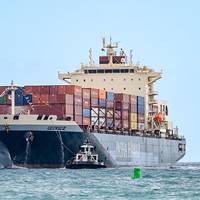
Operating on Liquefied Natural Gas (LNG) from day one in service, the MV George III, the first of Pasha Group’s two new ‘Ohana Class’, Jones Act-qualified containerships, features a state-of-the-art engine, an optimized hull form, and an underwater propulsion system with a high-efficiency rudder and propeller. George III is the first LNG-powered vessel to fuel on the West Coast and the first to serve Hawaii. The 774-ft. Jones Act vessel surpasses the International Maritime Organization (IMO) 2030 emission standards for ocean vessels.
Missing Engine Parts Lead to Ohio River Towboat Fire -NTSB
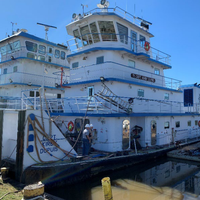
A missing retaining ring and mounting bracket on the port main diesel engine led to an engine-room fire on a towing vessel near Belleview, Ky., the National Transportation Safety Board (NTSB) said.Florida Marine Transporters' (FMT) towing vessel Capt. Kirby Dupuis was pushing loaded dry cargo barges on the Ohio River when a fire broke out on its portside engine on November 9, 2021. The crewmembers fought the fire using portable extinguishers and attempted to activate the vessel’s fixed fire-extinguishing system. The fire was eventually extinguished by local firefighters.
ATSB Calls Out Inadequate Fire Safety Standards
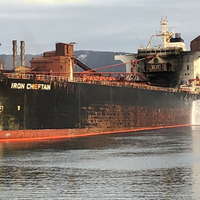
Australia's national transport safety investigator is calling out inadequate international vessel fire safety standards and regulations in the wake of a 2018 bulk carrier fire that took five days to contain and extinguish.The 202 meter, Australian flagged self-unloading bulk carrier Iron Chieftain was discharging its cargo of dolomite at Port Kembla, New South Wales in the early hours of June 18, 2018 when friction, probably from a failed bearing, generated enough heat to ignite a rubber conveyor belt in the C-Loop internal cargo handling space.
Top Maritime Trends of 2020: Tackling the Scourge of Containership Fires

The proliferation of serious fires onboard container ships in recent years has shocked the shipping industry. Here we examine the causes and impact of such fires and the urgent efforts being made by a wide variety of stakeholders to solve this seemingly intractable problem.Over the last decade there has been a 70% fall in ship total losses[1]. This has been widely credited to long term improvements in ship safety management and loss prevention programs. Counter to this trend, there has been a substantial increase in the number of fires in containers carried onboard container and RoRo ships.
Vessel Inspections: It's All About Safety
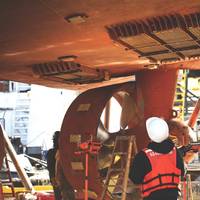
With the announcements that New York Waterway, a ferry operator running 32 boats around New York and New Jersey waters, had been largely shut down by the U.S. Coast Guard just prior to Thanksgiving, 2019, the reactions ranged from surprise to outright shock. There was also a great deal of grumbling, as commuters, the major customer group, endured delays on New York Waterway’s extensive network across the Hudson River, bringing New Jersey commuters into New York’s business districts.So, what happened?
New Safety Recommendations for Vessel Batteries
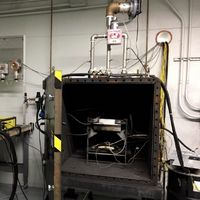
A new joint industry report offers recommendations for enhanced battery safety on vessels.The report, released by DNV GL in collaboration with the Norwegian, Danish and US maritime authorities, battery manufacturers, system integrators, suppliers of fire extinguishing systems, shipyards and shipowners, assesses explosion and fire risks in maritime battery installations and the effectiveness of fire extinguishing systems in the event of a battery fire.While onboard battery power represents a pathway toward more environmentally friendly vessel operations…
Most NY Waterway Ferries Back in Service
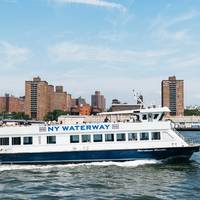
The majority of NY Waterway ferries taken out of service for safety violations last month have returned to regular operations, the U.S. Coast Guard said.On November 24, the Coast Guard revealed that Sector New York marine inspectors determined that 23 of NY Waterway's 32 ferries had damage or discrepancies significant enough to warrant a suspension of service. Findings included inoperable fixed fire extinguishing systems and bilge alarms; expired lifesaving equipment; and structural damage affecting watertight integrity.As of December 12…
Njord A Lifeboats Feature Electric Propulsion
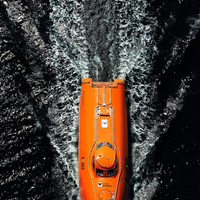
VIKING has secured a contract from Kværner AS to deliver three VIKING Norsafe E-GES 52 electric free-fall lifeboats and compatible davits, in a significant advance for electric propulsion. The contract, part of the upgrade of Equinor’s Njord A platform in the Norwegian Sea, initially called for diesel-powered lifeboats but has been amended to specify VIKING Norsafe E-GES 52 units based on performance, assured availability and lower maintenance requirements.The electric lifeboat is powered by 3x25kWh batteries contained in robust…
ASCO Overhauls Shair Vagif
The multi-purpose dry cargo vessel Shair Vagif, owned by the Transport Fleet of the Azerbaijan Caspian Shipping Company (ASCO) and operated in external waters, was overhauled at the Chernomorsk Shiprepair Yard shipyard in Ukraine.Within the implemented works from July 3 to August 12, hydraulic booster of the vessel, its main engines and separators, including fuel, radio navigation and rescue systems, were repaired.Moreover, all automated ship control systems were restored. Thus, F-3000 fire alarms, SDS-48 smoke alarms, SEMCO local fire extinguishing systems, emergency diesel generators and separators were repaired.The vessel has been put back into operation…
Ship of the Year: MOL FSRU Challenger
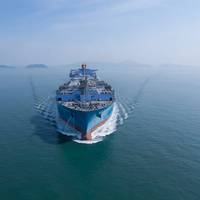
MOL FSRU Challenger is Maritime Reporter & Engineering News' Great Ships of 2017. The World’s Largest Floating Storage and Regasification Unit (FSRU Max). Japanese shipowner Mitsui O.S.K. Lines, Ltd. (MOL) in middle of October, took delivery of MOL FSRU Challenger the world largest floating storage and regasification unit (called FSRU Max vessel) from South Korean shipbuilder Daewoo Shipbuilding & Marine Engineering Co., Ltd. The state-of-the art FSRU Max vessel has a variety of valued functions…
Cargo Ship Banned from Australian Ports
A Papua New Guinea-flagged cargo ship Kiunga Chief has been banned from entering or using Australian ports for three months after the ship was detained for a third time in less than 18 months due to the failure of its operators to safely and effectively manage the operations of the vessel. “Substandard ships will not be tolerated in Australia,” said Stephen Curry, acting general manager of operations at the Australian Maritime Safety Authority (AMSA). AMSA issued an official direction banning Kiunga Chief to the master in the Port of Brisbane, and the ship has now gone to an anchorage within the port to undergo an inspection by its class society before it continues its voyage. The three month ban will take effect once the vessel leaves the port.
Firefighting on Workboats
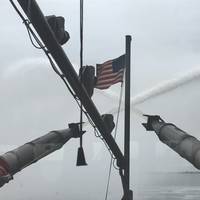
Marine fires have been some of the toughest fires for anyone to fight. Whether it’s a fire on your own boat, or a vessel you are escorting or working with you will need to know what you are doing if you wish to operate safely. Marine Firefighting Inc. has been training mariners as well as land-based firefighters to deal with all types of marine fires for more than 17-years. Much of our mariner training dealt with work boats built with powerful firefighting pumps and fire monitors used to deal with liquefied natural gas (LNG) ships and offshore facility fires.
DNV GL: Enhancing Fire Safety on Ro-Ro Decks
DNV GL has issued a report on fire incidents in Ro-Ro spaces to address growing safety concerns in this segment and provide guidance to shipowners. DNV GL’s “Fires on Ro-Ro decks” has examined fires within Ro-Ro spaces on Ro-Pax vessels, vehicle carriers and general Ro-Ro cargo vessels and has identified 35 such fires between 2005 and 2016. A previous DNV GL paper on Ro-Ro fires, published in 2005, had counted 25 fires in Ro-Ro spaces between 1990 and 2003. “We would like to contribute with facts, as well as with our experience. Hopefully, this can be useful input to operators and legislators in order to focus on the relevant items and make the right decisions,” says Hans Eivind Siewers, Segment Director Passenger Ships & Ro-Ro at DNV GL – Maritime.
Kidde Fire Systems Introduces New Monitors
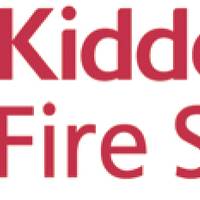
Kidde Fire Systems launched a new control head monitor (CHM) for electric actuators and solenoid monitors for directional valves. The new CHM is fully compliant with the National Fire Protection Association (NFPA) 2001-2012 Standard on Clean Agent Fire Extinguishing Systems and is designed for simple installation on existing Kidde systems. According to the company, electric actuators are commonly used as activating devices for the release of a fire suppression agent in the event of a fire and the NFPA requires these devices to be in place and ready to activate.
First Ship with Fire Safety Adapted to Methanol

The world’s first ship to run on methanol will soon sail international waters after the fire risk assessment by SP Fire Research was approved. Methanol has long been handled with traditional fire protection in cargo pump-rooms on tankers, but a deeper understanding of the fuel called for a new approach to design fire safety. The Stena Germanica is a ro-pax ferry that brings vehicles and passengers across the Baltic Sea. This area is, together with the North Sea and the English Channel…
Slew of New SOLAS Amendments Come into Force
IMO informs that new requirements under the International Convention for the Safety of Life at Sea (SOLAS) to require all ships to have plans and procedures to recover persons from the water are among a set of SOLAS amendments that came into force on 1 July 2014. The SOLAS amendments, adopted in 2012, were developed as part of the International Maritime Organization (IMO)’s work on large passenger ship safety and are aimed at ensuring all ships have the capability to effectively serve as a rescue asset and have the right equipment to be able to rescue persons from the water and from survival craft, in the event of an incident. This new requirement is intended to enhance safety at sea and also to provide support to search and rescue coordinators in all types of rescue operations and…
Great Ships of 2013: Bow Pioneer
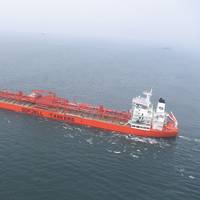
The world’s largest chemical tanker, Bow Pioneer, was built for Odfjell SE by Daewoo Shipbuilding & Marine Engineering, designed with two longitudinal corrugated bulkheads with lower stools and transverse corrugated bulkheads with lower stools to have 10 sets (P&S&C) of cargo tanks, and 11 tanks for WB consisting of four pairs of wing and double bottom tanks, one U-type tank and two water ballast heeling tanks. The ship is equipped with a cargo handling system for the loading…
Great Ships of 2013: Shuttle Tanker RIO 2016 for TEN

RIO 2016 is the first vessel in a series of two shuttle tanker in Brazilian water operation, designed by Sungdong Shipbuilding & Marine Engineering for Tsakos Energy Navigation Ltd., two companies with a long and good historic relationship. This vessel was chartered to Petroleo Brasileiro SA. The ship is built under the survey of DNV and designed in accordance with IACS common structure rule (CSR). The vessel has six pairs of cargo oil tanks, two slop tanks, fore and aft peak tanks, segregated water ballast tanks, fuel oil tanks and fresh water tanks.
Water Mist in Large Machinery Spaces
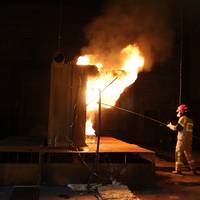
Water mist systems are extensively used as fire protection of machinery spaces onboard passenger ships, and have almost taken over as fire extinguishing systems after IMO standardized such systems. Water mist systems are documented through full scale fire testing of the manufacturers' solutions. In practice it has been shown that in spaces with a ceiling height above approximately 10m it is necessary with more water mist nozzles to extinguish low seated fires. The IMO-method that describes the test procedures requires that all nozzles are mounted at ceiling level…
Kongsberg: New Drilling Rig and Ship Simulator

Kongsberg Maritime has introduced two new Diesel Electric models for its Engine Room Simulator, K-Sim Engine (previously Neptune). The DE88 Semi-Submersible Drilling Rig model, containing eight Wärtsilä 16V26 engines and eight thrusters, is already available, while the DE66 Drill Ship model, simulating full operation of six MAN 16V32/40 diesel generators powering six thrusters, will be released in Q1 2014. Both new models are designed to support critical learning objectives for offshore engineering crew including complete system understanding under normal operation…
Public Notification of Amendments to the Rules and Guidance
Classification society ClassNK (Chairman and President: Noboru Ueda) announced the release of the latest version of its Rules and Guidance for the Survey and Construction of Steel Ships. These versions include all amendments dated 30 May 2013. ClassNK is constantly revising its Rules and Guidance to reflect requests from industry, the latest results from relevant research and development projects, feedback from damage investigations as well as changes made to relevant international conventions, IACS Unified Requirements and national regulations. Both printed and CD-ROM versions of the 2013 edition of the Rules and Guidance are available for purchase online…





